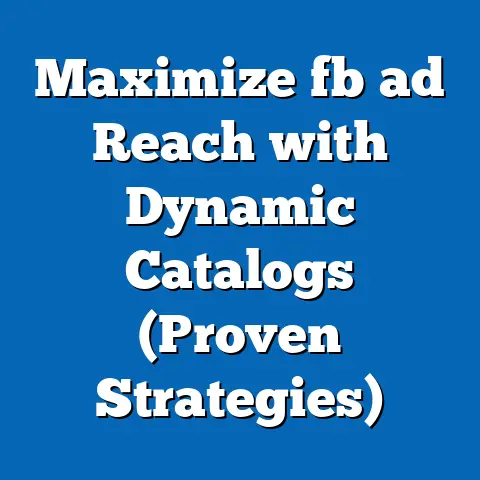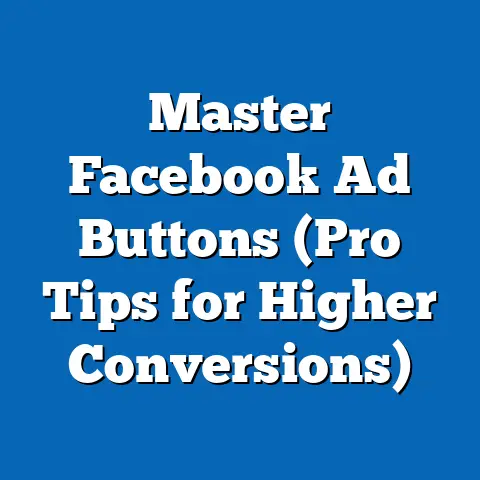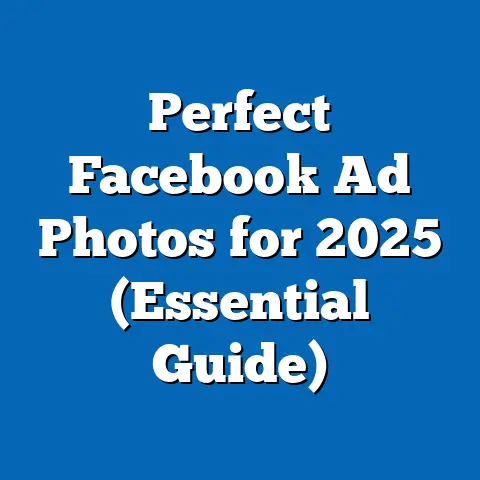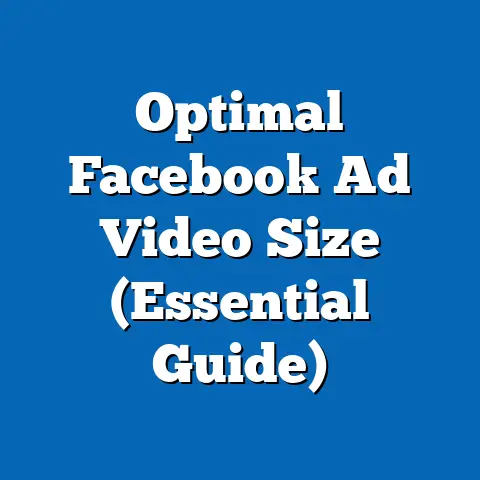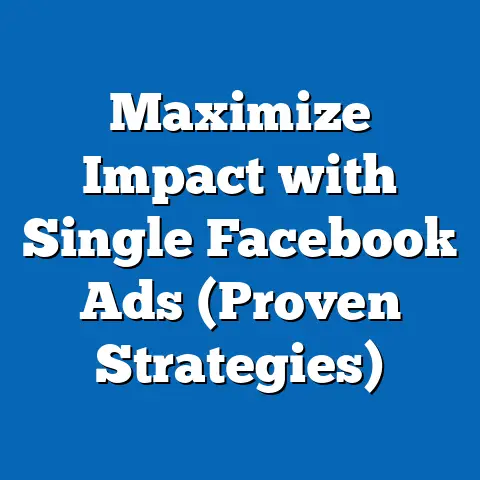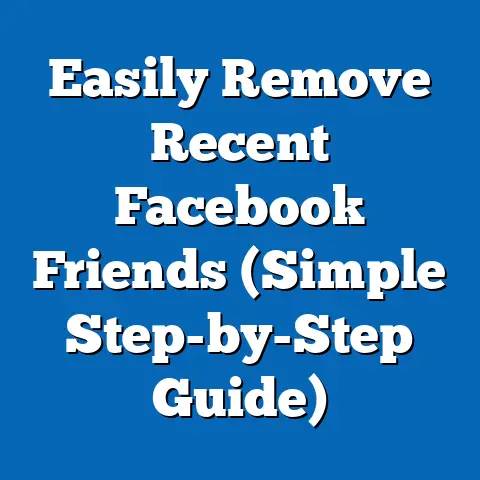Post Winning Job Ads on Facebook (Ultimate Guide Revealed)
In the digital age, social media platforms have transformed how businesses connect with potential employees, and Facebook stands out as a powerful tool for job advertising. With over 2.9 billion monthly active users as of 2023, according to Statista, Facebook offers unparalleled access to a diverse, global talent pool. However, crafting job ads that stand out in a crowded digital space requires a nuanced understanding of the platform’s unique texture—its user demographics, algorithmic behavior, and cultural dynamics.
Section 1: Understanding the Texture of Facebook as a Recruitment Platform
1.1 Defining Characteristics of Facebook’s Recruitment Landscape
Facebook is not just a social networking site; it has evolved into a multifaceted ecosystem where personal connections, professional networking, and business operations intersect. One of its defining characteristics for recruitment is its vast and diverse user base, spanning multiple generations, geographies, and socioeconomic backgrounds. Unlike LinkedIn, which is explicitly career-focused, Facebook’s casual and community-driven nature allows employers to reach passive job seekers—individuals who may not be actively looking for work but are open to opportunities.
Another key feature is the platform’s robust advertising tools, such as Facebook Ads Manager, which enable hyper-targeted job postings based on demographics, interests, and behaviors. Additionally, Facebook Groups and Pages provide organic opportunities for employers to build communities around their brand, fostering long-term engagement with potential candidates. However, the platform’s algorithm prioritizes content that drives engagement, meaning job ads must be crafted to spark interaction rather than simply inform.
This evolution reflects broader societal shifts toward digitalization and the gig economy. As traditional job boards like Monster and CareerBuilder faced declining relevance, social media platforms emerged as dynamic alternatives. Facebook’s accessibility—particularly for blue-collar workers, small businesses, and industries with high turnover—made it a game-changer in democratizing recruitment. Today, millions of job seekers, especially in emerging markets, rely on Facebook as a primary resource for employment opportunities, according to a 2022 study by the Pew Research Center.
1.3 Societal Implications of Facebook Recruitment
The rise of Facebook as a recruitment tool has far-reaching societal implications. On one hand, it lowers barriers to entry for job seekers who may lack access to formal networks or premium job platforms, promoting inclusivity. For employers, it offers a cost-effective way to reach niche audiences, especially in industries like retail, hospitality, and construction.
However, there are challenges. The platform’s reliance on algorithms can perpetuate biases if ads are not carefully targeted or if data inputs reflect existing inequalities. Privacy concerns also loom large, as job seekers may be hesitant to share personal information on a platform historically criticized for data mishandling. Furthermore, the informal nature of Facebook can blur professional boundaries, leading to miscommunication or unprofessional interactions between employers and candidates.
Section 2: Crafting Winning Job Ads on Facebook – A Step-by-Step Guide
2.1 Step 1: Know Your Audience
Before posting a job ad, it’s critical to understand who you’re trying to reach. Facebook’s user base is diverse, with significant representation from Gen Z (born 1997-2012), Millennials (born 1981-1996), and Gen X (born 1965-1980), according to 2023 data from Hootsuite. Each group interacts with the platform differently—Gen Z prioritizes visual content like videos, while Millennials value authenticity and community engagement.
Use Facebook’s Audience Insights tool to analyze the demographics, interests, and behaviors of your target candidates. For example, if you’re hiring for a tech startup, target users interested in “software development” or “coding bootcamps.” Tailoring your messaging to resonate with specific generational or cultural values can significantly boost engagement.
2.2 Step 2: Optimize Your Job Ad Content
The content of your job ad is the heart of its success. Start with a compelling headline that grabs attention—think “Join Our Innovative Tech Team!” rather than a generic “Software Engineer Needed.” Use clear, concise language to outline the role, responsibilities, and qualifications, avoiding jargon that might alienate potential applicants.
Incorporate storytelling to humanize your brand. Share a brief anecdote about your company culture or a success story from a current employee. Visuals are also critical—posts with images or videos receive 94% more views, according to Social Media Today. Include a photo of your team or a short video tour of your workplace to build trust and excitement.
Finally, include a strong call-to-action (CTA). Phrases like “Apply Now to Start Your Dream Career!” or “Message Us to Learn More!” encourage immediate responses. Be sure to link to an application form or provide clear instructions for next steps.
2.3 Step 3: Leverage Facebook’s Advertising Tools
Organic reach on Facebook is limited due to the platform’s algorithm, which prioritizes paid content. Investing in Facebook Ads can amplify your job posting’s visibility. Use the platform’s targeting options to narrow your audience by location, age, education level, and even specific job titles or skills.
Set a realistic budget based on your hiring goals. For local roles, a daily budget of $5-10 can suffice, while competitive industries or remote positions may require $20-50 per day. Monitor ad performance through Facebook Ads Manager, adjusting your strategy based on metrics like click-through rates (CTR) and application numbers.
2.4 Step 4: Engage with Candidates
Unlike traditional job boards, Facebook allows for two-way communication. Respond promptly to comments or messages from interested candidates to build rapport. Be transparent about the hiring process, salary range, and benefits to manage expectations early on.
Consider joining or creating Facebook Groups related to your industry. For instance, a restaurant owner might post in local “Hospitality Jobs” groups to connect with servers or chefs. Engaging in these communities not only boosts your ad’s reach but also positions your company as an active, approachable employer.
2.5 Step 5: Measure and Refine Your Strategy
Successful job ads require continuous improvement. Use Facebook’s analytics tools to track key performance indicators (KPIs) such as impressions, engagement, and application rates. If an ad underperforms, experiment with different visuals, headlines, or targeting parameters.
Solicit feedback from candidates who applied through Facebook. Did they find the ad clear? Was the application process user-friendly? Incorporating this qualitative data into your strategy can help refine future postings.
Section 3: Generational Dynamics in Facebook Job Ads
3.1 Tailoring Ads to Generational Preferences
Generational differences play a significant role in how job ads are received on Facebook. Gen Z, for instance, values flexibility and purpose-driven work, according to a 2021 Deloitte survey. Ads targeting this group should highlight remote work options, growth opportunities, and social impact initiatives.
Millennials, who make up a large portion of the workforce, prioritize work-life balance and company culture. Showcase testimonials or behind-the-scenes content to appeal to their desire for authenticity. Gen X, often in mid-to-senior-level roles, responds well to ads emphasizing stability, benefits, and leadership opportunities.
3.2 Avoiding Stereotypes and Embracing Diversity
While generational trends provide useful insights, it’s important to avoid overgeneralizations. Not all Millennials are tech-savvy, nor are all Gen Xers resistant to change. Within each generation, there’s immense diversity based on socioeconomic status, cultural background, and personal experiences.
Craft ads that are inclusive and speak to a broad audience. Use neutral language, avoid age-specific references, and ensure visuals reflect diversity in race, gender, and ability. This approach not only broadens your candidate pool but also aligns with modern expectations of workplace equity.
Section 4: Technological, Economic, and Cultural Factors
4.1 Technological Influences
Facebook’s algorithm and ad tools are constantly evolving, driven by advancements in artificial intelligence and machine learning. Staying updated on platform changes—such as shifts in ad ranking or new targeting features—can give employers a competitive edge. Additionally, the rise of mobile-first usage (over 98% of users access Facebook via mobile devices, per Statista) means job ads must be optimized for smaller screens with fast-loading visuals and concise text.
4.2 Economic Considerations
Economic conditions heavily influence recruitment on Facebook. During periods of high unemployment, such as the post-COVID-19 recovery phase, job ads may receive overwhelming responses, necessitating efficient screening processes. Conversely, in tight labor markets, employers must invest more in paid ads and compelling content to attract top talent.
Facebook’s cost-effectiveness is a major draw for small businesses with limited budgets. Unlike traditional recruitment agencies, which can charge thousands of dollars, a well-targeted Facebook ad campaign can yield results for as little as $50-100, making it accessible to startups and local employers.
4.3 Cultural Shifts
Culturally, the normalization of social media in professional contexts has reshaped hiring. Job seekers increasingly expect transparency and authenticity from employers, a trend amplified by movements like #QuietQuitting and calls for better workplace mental health support. Ads that address these cultural shifts—by highlighting employee wellness programs or flexible schedules—can resonate more deeply with candidates.
Section 5: Implications for Society and the Workplace
5.1 Societal Impact
The use of Facebook for job advertising reflects and reinforces broader societal trends toward digital connectivity. It empowers marginalized groups, such as rural job seekers or those without formal education, by providing access to opportunities that might otherwise be out of reach. However, it also exacerbates the digital divide—individuals without reliable internet access or digital literacy skills may be left behind.
5.2 Workplace Dynamics
In the workplace, Facebook recruitment fosters a more informal hiring process, which can lead to faster onboarding but also potential mismatches if expectations aren’t clearly communicated. It also encourages a shift toward employer branding, as companies must maintain an active, positive online presence to attract talent. HR teams must adapt by developing social media expertise and integrating platforms like Facebook into their broader talent acquisition strategies.
Section 6: Challenges and Ethical Considerations
6.1 Algorithmic Bias
Facebook’s targeting tools, while powerful, can inadvertently perpetuate bias. For example, if an ad for a tech role is shown predominantly to men due to historical data patterns, it may exclude qualified women. Employers must actively monitor and adjust targeting criteria to ensure fairness and diversity in their candidate pool.
6.2 Privacy Concerns
Job seekers may be wary of sharing personal information on Facebook, given past data breaches like the 2018 Cambridge Analytica scandal. Employers should be transparent about how applicant data will be used and stored, offering secure application links outside the platform if necessary.
6.3 Misinformation and Scams
The informal nature of Facebook makes it a breeding ground for fraudulent job postings. Employers must build trust by using verified Pages, providing detailed contact information, and avoiding “too good to be true” promises. Educating candidates on spotting scams—such as requests for upfront payments—can also protect your brand’s reputation.
Section 7: Forward-Looking Insights
As we look to the future, Facebook’s role in recruitment is likely to grow, driven by innovations like augmented reality job previews and deeper integration with Meta’s ecosystem (e.g., WhatsApp for candidate communication). However, uncertainties remain, including potential regulatory changes around data privacy and algorithmic transparency.
Employers must stay agile, adapting to platform updates and shifting user behaviors. Investing in social media training for HR teams and building authentic online communities will be key to long-term success. While challenges like bias and privacy persist, the potential for Facebook to democratize hiring and connect diverse talent with meaningful opportunities is undeniable.
Conclusion
Posting winning job ads on Facebook requires a deep understanding of the platform’s texture—its user base, technological tools, and cultural nuances. By crafting targeted, engaging content and leveraging data-driven strategies, employers can tap into a vast talent pool while navigating the challenges of algorithmic bias and privacy concerns. As social media continues to redefine recruitment, staying informed and adaptable will be crucial for success in this dynamic landscape.
This ultimate guide offers a roadmap for harnessing Facebook’s potential, from understanding generational dynamics to addressing societal implications. While the future holds uncertainties, one thing is clear: with the right approach, Facebook can be a transformative tool for connecting employers and job seekers in an increasingly digital world.

